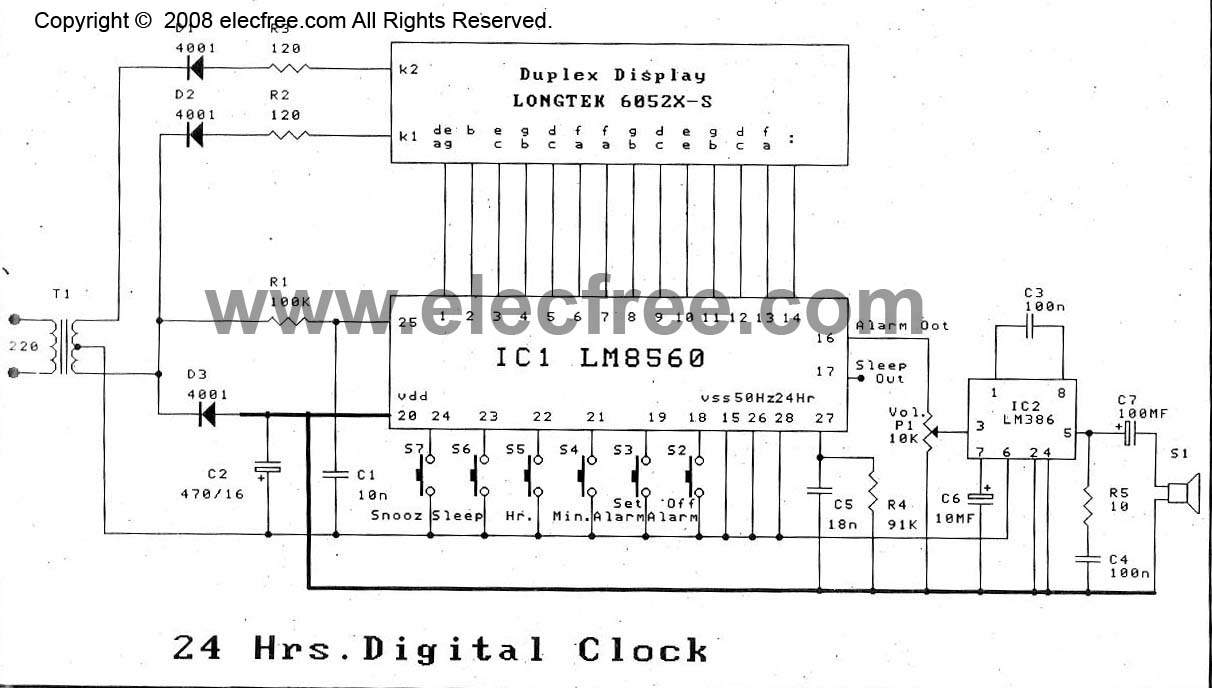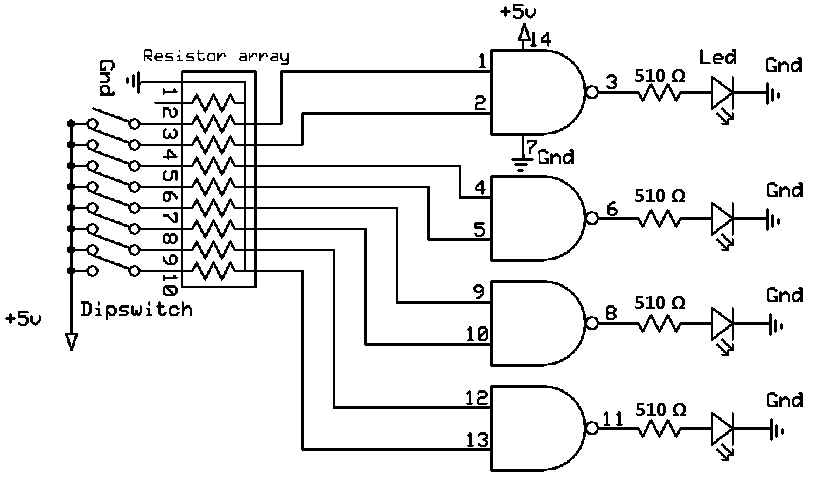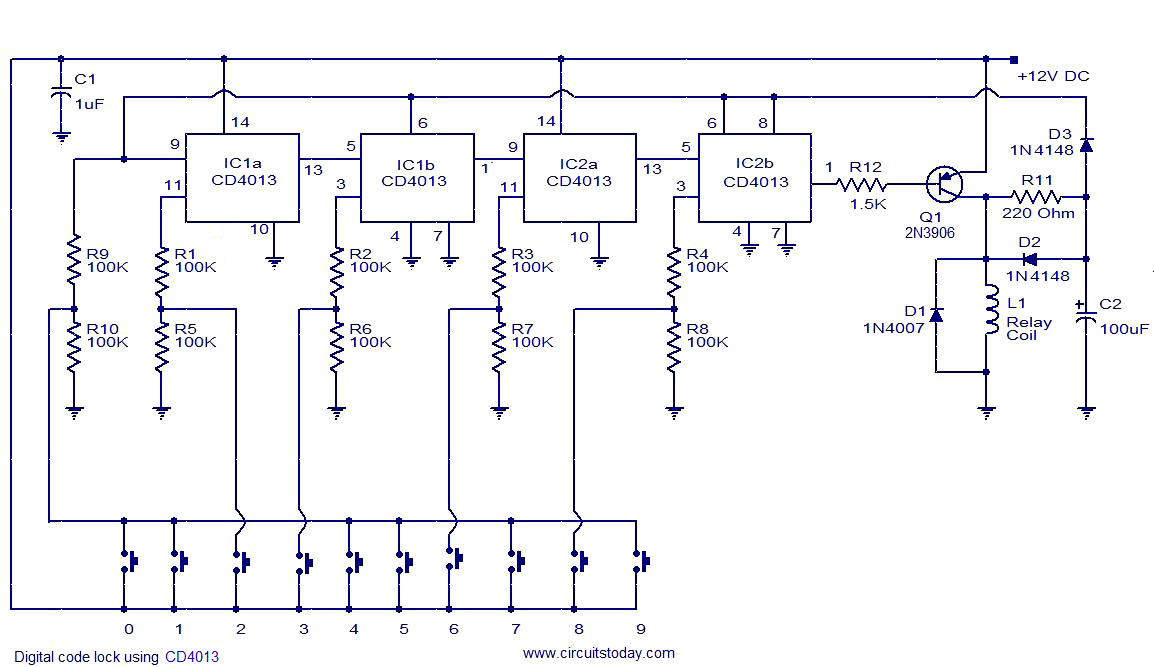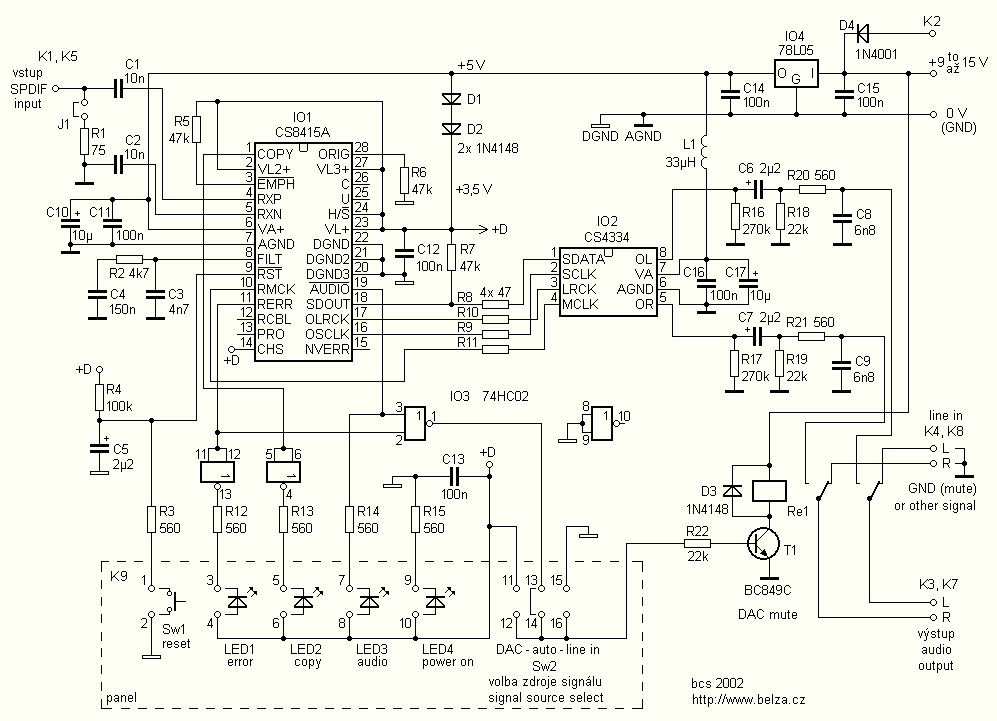
Monolithic/Hybrid Digital to Analog Converters
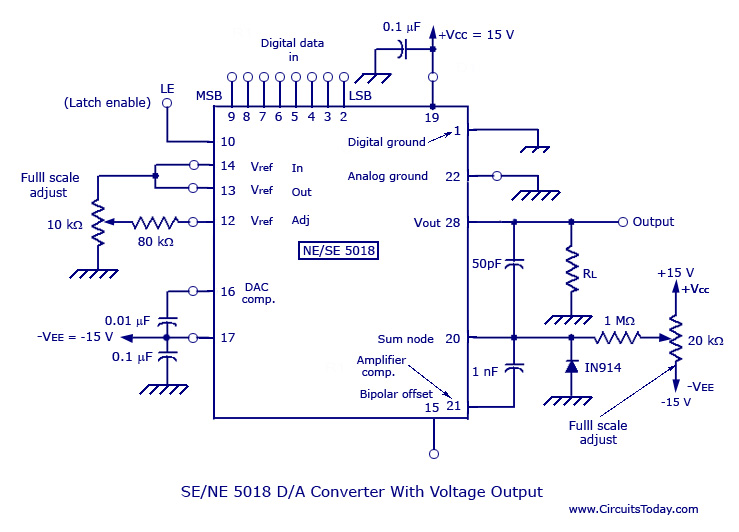
Monolithic and hybrid digital-to-analog converters utilizing MC 1408 IC and SE/NE 5018, including specifications and applications.
Digital-to-analog converters (DACs) are integral components in various electronic systems, enabling the conversion of digital signals into corresponding analog voltages or currents. The MC 1408 integrated circuit (IC) and the SE/NE 5018 series are notable examples of monolithic and hybrid DACs that serve diverse applications.
The MC 1408 is a monolithic DAC that employs a resistor ladder network and a switched capacitor architecture to achieve high precision in output signals. It typically features a binary-weighted input configuration, allowing it to convert digital inputs directly into their analog equivalents with minimal distortion. The device is characterized by low power consumption, making it suitable for battery-operated devices and portable applications. Its output voltage range can be adjusted, providing flexibility in interfacing with various analog systems.
On the other hand, the SE/NE 5018 series represents hybrid DACs that combine discrete components with integrated circuits to enhance performance. These devices often provide improved linearity and temperature stability compared to purely monolithic designs. The SE/NE 5018 DACs are capable of handling multiple input formats, including binary and BCD (binary-coded decimal), which broadens their usability in different electronic applications, such as audio processing, instrumentation, and telecommunications.
The specifications of these DACs typically include parameters such as resolution, which defines the smallest change in output voltage corresponding to a change in the digital input, and settling time, which indicates how quickly the output stabilizes after a change in input. Additionally, factors like linearity error, power supply requirements, and output impedance are critical in determining the suitability of these DACs for specific applications.
In summary, the MC 1408 and SE/NE 5018 digital-to-analog converters represent significant advancements in DAC technology, offering versatile solutions for converting digital signals to analog form in a wide range of electronic applications. Their design features and specifications make them suitable for high-performance tasks, ensuring reliable and accurate signal conversion.Monolithic/Hybrid Digital to Analog Converters using MC 1408IC,SE/NE 5018, Specifications and Applications. 🔗 External reference
Digital-to-analog converters (DACs) are integral components in various electronic systems, enabling the conversion of digital signals into corresponding analog voltages or currents. The MC 1408 integrated circuit (IC) and the SE/NE 5018 series are notable examples of monolithic and hybrid DACs that serve diverse applications.
The MC 1408 is a monolithic DAC that employs a resistor ladder network and a switched capacitor architecture to achieve high precision in output signals. It typically features a binary-weighted input configuration, allowing it to convert digital inputs directly into their analog equivalents with minimal distortion. The device is characterized by low power consumption, making it suitable for battery-operated devices and portable applications. Its output voltage range can be adjusted, providing flexibility in interfacing with various analog systems.
On the other hand, the SE/NE 5018 series represents hybrid DACs that combine discrete components with integrated circuits to enhance performance. These devices often provide improved linearity and temperature stability compared to purely monolithic designs. The SE/NE 5018 DACs are capable of handling multiple input formats, including binary and BCD (binary-coded decimal), which broadens their usability in different electronic applications, such as audio processing, instrumentation, and telecommunications.
The specifications of these DACs typically include parameters such as resolution, which defines the smallest change in output voltage corresponding to a change in the digital input, and settling time, which indicates how quickly the output stabilizes after a change in input. Additionally, factors like linearity error, power supply requirements, and output impedance are critical in determining the suitability of these DACs for specific applications.
In summary, the MC 1408 and SE/NE 5018 digital-to-analog converters represent significant advancements in DAC technology, offering versatile solutions for converting digital signals to analog form in a wide range of electronic applications. Their design features and specifications make them suitable for high-performance tasks, ensuring reliable and accurate signal conversion.Monolithic/Hybrid Digital to Analog Converters using MC 1408IC,SE/NE 5018, Specifications and Applications. 🔗 External reference

